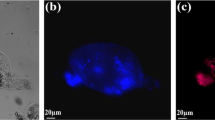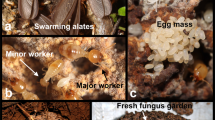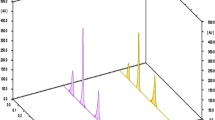Abstract
JANUS green, a bluish green basic dye of the morio-azo group, was observed to react in an interesting and useful manner with both nematode-trapping fungi and their prey. The dye is used at a concentration of 0.01 per cent in 0.2 M sodium acetate–acetic acid buffer at pH 4.6, and added drop by drop to the test material. Excellent results were obtained when the staining solution was applied directly to surface cultures of Arthrobotrys conoides, A. dactyloides and Dactylella ellipsospora, on maize-meal extract agar and on ‘Cellophane’1. These fungi capture nematodes by means of adhesive hyphal loops, constricting rings, and adhesive knobs, respectively. The nematode used was Panagrellus redivivus.
This is a preview of subscription content, access via your institution
Access options
Subscribe to this journal
Receive 51 print issues and online access
$199.00 per year
only $3.90 per issue
Buy this article
- Purchase on Springer Link
- Instant access to full article PDF
Prices may be subject to local taxes which are calculated during checkout
Similar content being viewed by others
References
Fleming, A., and Smith, G., Brit. Mycol. Soc. Trans., 27, 13 (1944).
Gurr, E., Encyclopedia of Microscopic Stains (Williams and Wilkins Co., Baltimore, Md., 1960).
Cooke, R. C., Nature, 191, 1411 (1961).
Author information
Authors and Affiliations
Rights and permissions
About this article
Cite this article
FAUST, M., PRAMER, D. A Staining Technique for the Examination of Nematode-trapping Fungi. Nature 204, 94–95 (1964). https://doi.org/10.1038/204094b0
Issue Date:
DOI: https://doi.org/10.1038/204094b0
Comments
By submitting a comment you agree to abide by our Terms and Community Guidelines. If you find something abusive or that does not comply with our terms or guidelines please flag it as inappropriate.



